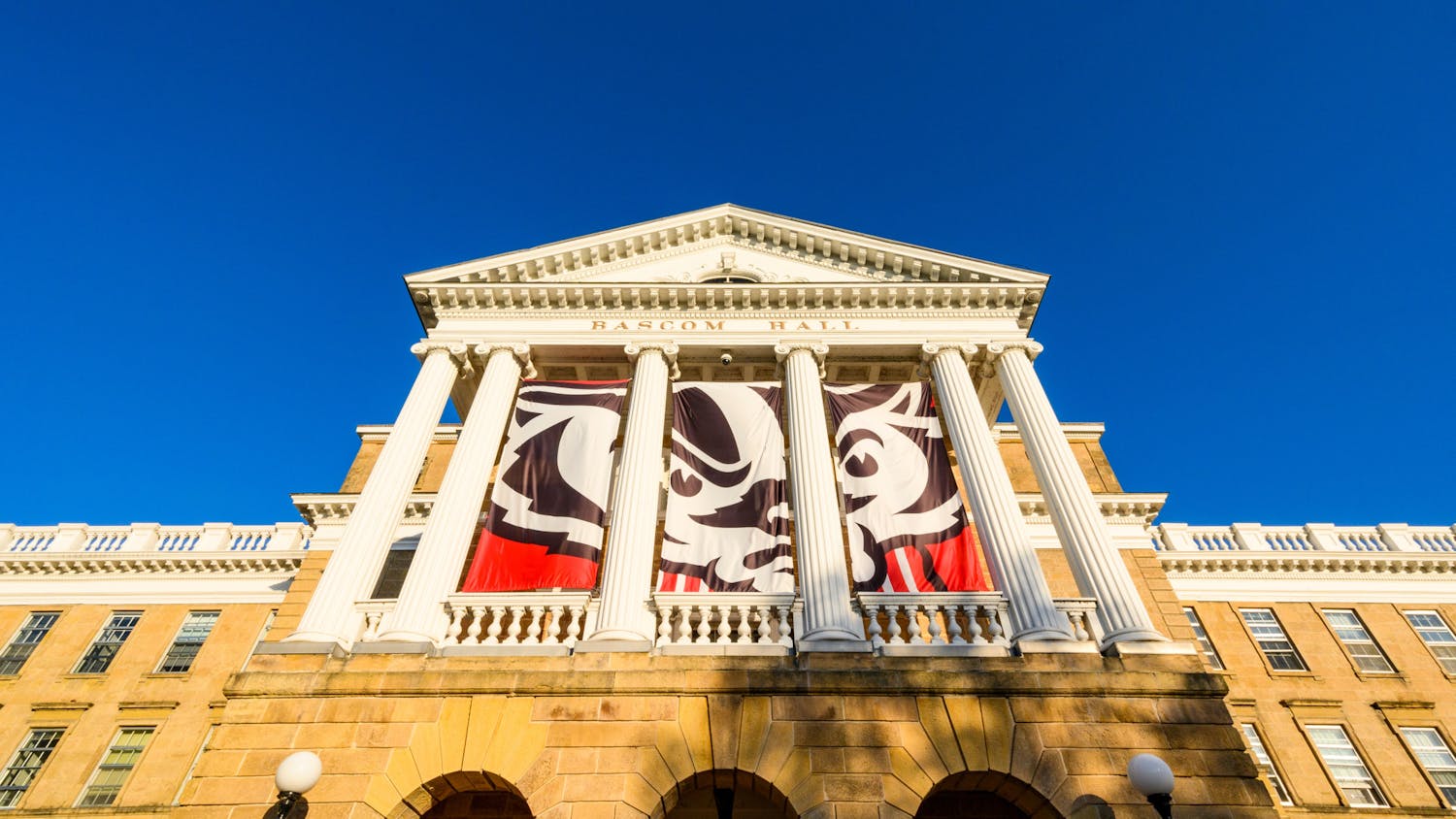With the growing predicament of climate change and its associated impacts, which were felt across Madison last summer with extensive, destructive flooding, it is important that leadership within the City of Madison continues to make sustainable development a priority.
However, in order to move forward with proactive urban planning and inevitable expansion, the term ‘sustainable development’ must be clear.
Integrating sustainability into new construction and retrofitting development is more than just being eco-friendly in the usage of materials: it means ensuring that the blueprint for a city is feasible, incentivizes efficient growth, and works with the surrounding ecology, energy systems and economic landscape.
There are many ways to look at sustainable development, from the inclusion of affordable housing so as to curb suburban sprawl, to adjusting city zoning to ensure an equitable allocation of resources.
Thus, we are left to consider what sustainable development should mean in Madison. Prioritizing flooding resiliency, environmental justice, preserving habitats, and lowering the city’s carbon footprint are all issues for the city to strive towards, and the list doesn’t end there.
Given these realities, Madison must identify the most pressing concerns and implement policies that can achieve the greatest impact. This article will propose feasible actions that the city and UW-Madison alike can take to ensure tangible results that will promote the sustainability of our beautiful city.
Stormwater Management
A fitting place to start is stormwater management, which has gained substantial newsworthiness since last summer’s flooding. With flood damage worth over $154 million in Dane County alone, and only two percent of residents with insured damages, it isn’t controversial that intervention is needed.
How such intervention will take form, however, is hotly debated.
For example, there has been a recurrent argument over whether to lower lake levels to ensure more storage space for water before flash flooding takes place. However, this proposition is not appealing to homeowners on Mendota and Monona, and the media landscape has been filled with arguments for and against such an action.
Yet, recently elected Mayor Satya Rhodes-Conway has committed to managing the lakes at a lower level during her time as mayor, as well as a series of other suggestions to make stormwater management more effective in Madison. Her other suggestions include increasing the tree canopy, adjusting stormwater fees, offering rebates for properties that retain water onsite, and evaluating whether a real-time sensor program would be effective. While the impact of said policies remain to be seen (if they are actually enacted) it is encouraging to see the new mayor looking toward resolute environmental initiatives.
Additional suggestions include the installation of rain gardens and pervious surfaces, such as grass, sand, gravel, and permeable concrete, both of which UW has instituted previously.
Rooftop gardens and green roofs can be found across our campus, with projects on the Pyle Center, Dejope Residence Hall, Microbial Sciences, Engineering Hall, Union South, the Education Building, LaBahn Arena, Gordon Dining & Event Center, and the Student Activity Center.
These spaces mitigate the problem of stormwater runoff in an urban city where impervious concrete dominates the infrastructural landscape. By absorbing this water and releasing it slowly as it makes its way through the plants, roots and soil, green roofs are able to effectively improve stormwater management, as well as increase water quality, combat the urban heat island effect, sequester carbon, and provide a habitat for wildlife.
Permeable pavement also mitigates the shocks of stormwater by absorption, with projects on our campus located outside of Memorial Union, Parking Lot 92, Nancy Nicholas Hall, Carson Gully Commons, Tripp Hall, Leopold Residence Hall, WI Energy Institute, as well as two trial sites on the west side of campus.
These double-use infrastructure systems are stable enough for driving, parking, or walking, as well as their intentional purpose as a retention basin for rainwater. Thus, they are maximizing land use, while also experiencing the positive externalities associated with reduced peak water flow in an area that is prone to flooding (like an isthmus!)
These relatively low-cost solutions to mitigate excessive stormwater not only serve this purpose, but also can help contribute to sense of place by involving students in the erection of such projects.
These two policies could be further expanded as art and design projects, with students creatively working with gravel and other materials. Rooftop gardens, like the one that the organization F.H. King Students for Sustainable Agriculture has on the Pyle Center, can offer a source of produce for students. While these are not the intended uses, incentives like these may make students and their departments excited and passionate about such projects, furthering interest and dedication to such installations.
Density and Transportation
For many UW students, the prospect of increasing housing is thought of exclusively as a means to mitigate an affordability issue. This perspective is more than valid; with rent around $800 a month for apartments near campus, lower income students are often forced further away from downtown. In addition to the affordability concerns, however, housing policy has a large effect on a city’s environmental impact.
Increasing housing units built across the city will help to alleviate these two issues. Comparing Madison to Lincoln, Nebraska and Des Moines, Iowa (two relatively similar midwestern cities in terms of size, density, and population growth) reveals Madison has higher average rent, and longer average commute times.
This demonstrates that people are willing to pay more and travel further to live in Madison — or surrounding areas — which is not a bad thing. This means that Madison is an attractive place for people to work and live, but that comes at a cost. The current housing shortage in Madison results in high rent in the city boundaries, which pushes more and more people into suburbs such as Sun Prairie and Fitchburg. Many of these suburbanites still work in Madison, and subsequently face longer car commutes, burning more fossil fuels as they go.
Consequently, it is the city’s obligation to increase housing density (with a set aside for affordable units) to mitigate increasing rent and reduce transportation times. Promoting housing investment in areas that are close to hubs of economic activity will have people living closer to their workplaces. Compounding this policy with environmentally friendly building standards will create a blueprint of an eco-conscious urban life.
Matthew Mitnick — a UW freshman who founded the International City and County Management Association and also ran for District 8 Alder — emphasizes the essential role that affordable set asides must play to make this framework successful. Without such mandates in place, Mitnick (who also sits on the Joint Campus Area Committee) effectively argues that developers do not have an incentive to build low-cost housing, enabling a cycle causing “future housing projects to be expensive as well,” hurting students and long-term residents in the process.
However, by implementing a mandate in which developers must include a sizable percentage of affordable units, Madison can encourage economic prosperity and environmental protection while reducing gentrification.
A further complementary policy towards increasing sustainability-focused housing lies in improving Madison’s public transportation system. The daily rush hour congestion on University and West Johnson may not impact students directly, but it negatively contributes to both emissions and overall civic enjoyment. Increasing development in areas with high job concentration will assuage this problem, but further incentives to limit private automobile commutes will certainly be needed.
Although Madison is the second largest urban center in Wisconsin, its population is likely too small to justify an extensive train or subway system. The current bus system is noble, yet wholly inadequate. Increasing bus frequency, particularly in places near the capitol and the Greenbush neighborhood, will lessen Madisonians’ reliance on cars.
However, the most necessary improvement is the Bus Rapid Transit (BRT) measure. According to the Madison Area Transportation Planning Board, the BRT is “a frequent, high-capacity, limited-stop transit service that offers improved rider experience on busy travel corridors.
Mitnick explains that the BRT’s “separate lanes, special light sequencing, accurate wait times, [and] state-of-the-art vehicles… will motivate Madison residents to take the bus.” When implemented, the BRT will “shorten commute times around campus and the greater Madison area,” allowing residents to accept jobs across town from where they live (if necessary) without heightening carbon emissions.
The BRT should be one of Madison’s primary sustainable goals going forward. Through policies such as this, Madison can exhibit its dedication towards initiatives that prioritize overall civic health. It is this idea — valuing the city experience for all inhabitants — that is the root of sustainable development.
With the state of our environment as a growing concern to people of our generation, it is up to the city’s new leadership to demonstrate what 21st century sustainability on a regional level looks like. As a city known for its history of environmentalism, Madison is in a perfect situation to undertake bold policy initiatives to show its commitment to modern sustainability. In doing so, Madison can demonstrate to the rest of the Midwest how cities can successfully operate given contemporary — and future — circumstances.






